If the objective of your ads is to generate leads you need to focus your efforts on perfecting the page that visitors land on when they click. That is, you need to create landing pages that generate leads.
In this post, I’m going to share best practices for writing and building a high converting landing page.
Landing Pages Best Practices–Copy, Design & Optimization
1. Your landing page should only include one link.
Your landing page should not include the page navigation links that you typically use on your homepage and throughout your website, nor should it promote your social media accounts.
In fact, your landing page shouldn’t include any component that tempts visitors to take any action besides the one you want them to.
Including links and other distractions is the most common landing page mistake. In fact, it’s difficult to find landing pages that don’t break this rule.
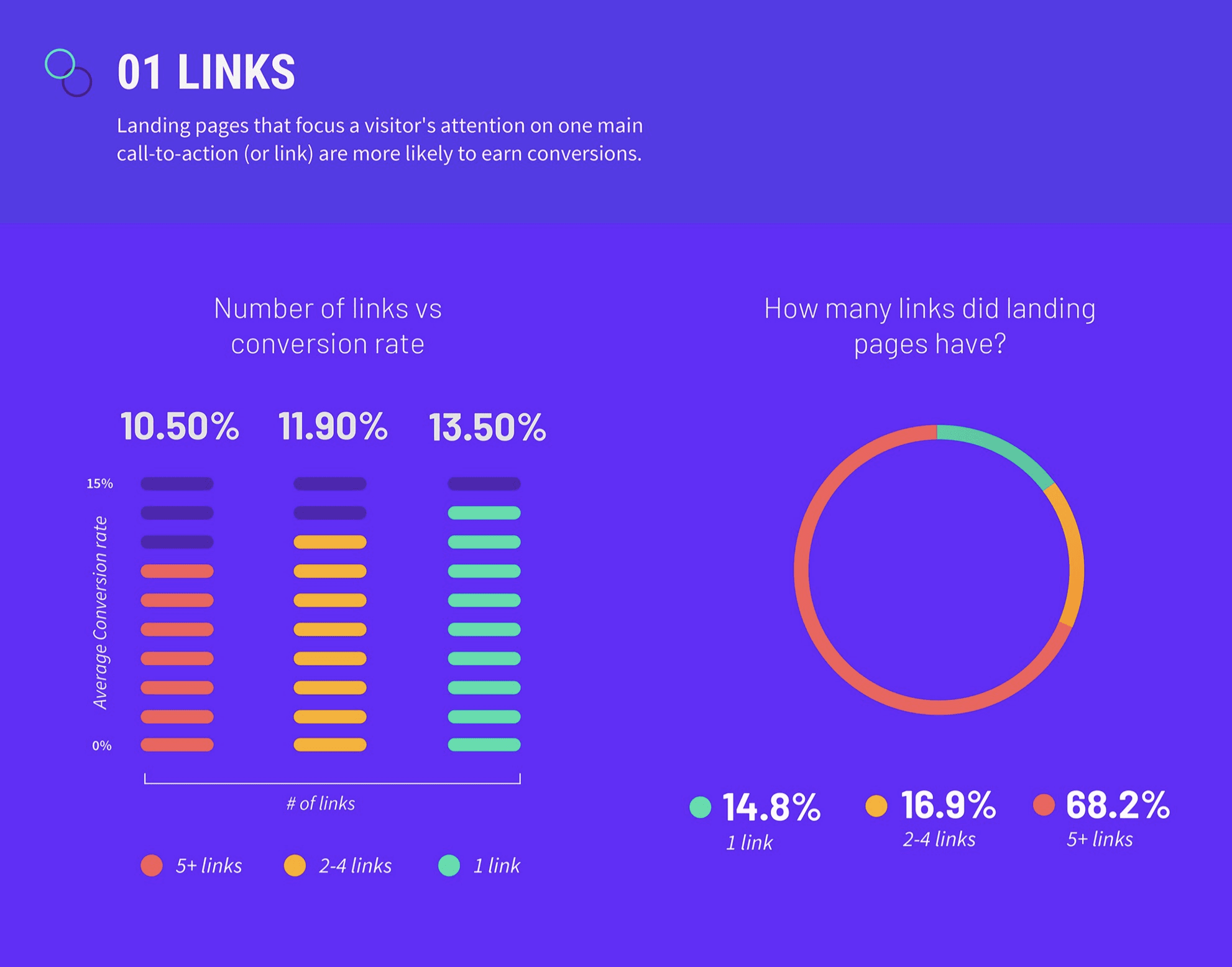
Research from Unbounce reveals landing pages with one link convert at the highest rate yet only 14.8% of landing pages have one link.
2. Your headlines should match your message.
The ideal landing page features a headline that closely matches the content of the ad. Your message should quickly reinforce your ad’s message so your visitor never wonders, “Why am I here?”

Here’s an example of message matching in action. The PPC ad above promises a social media management tool for tracking campaigns. The landing page presents a headline perfectly aligned with the selling proposition.
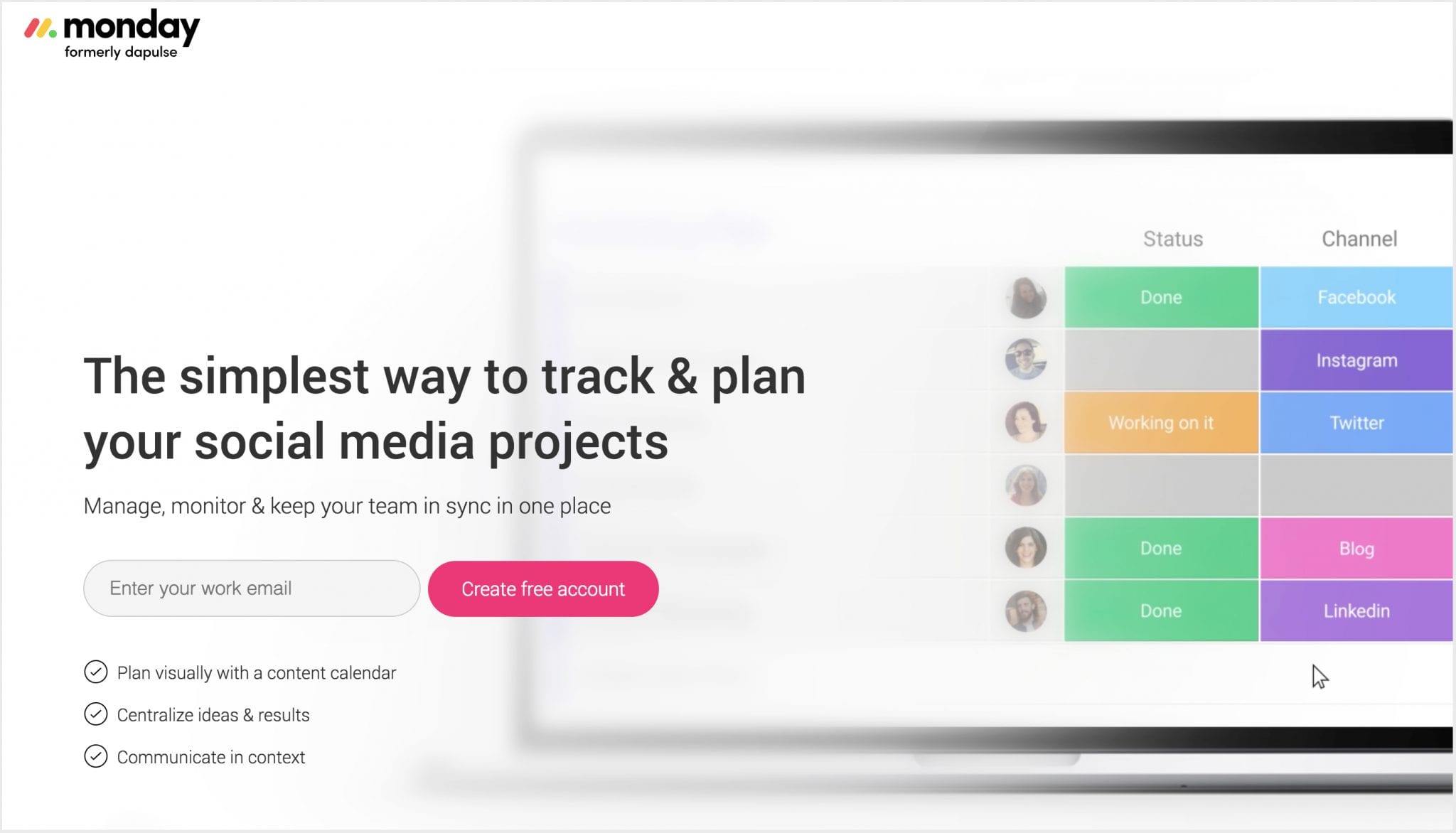
3. Feature only content that’s useful for your target audience.
Great landing pages can be short and sweet or long and tasty. They vary in length and there are no steadfast rules to dictate word count.
They also differ greatly regarding what types of content are included.
The point is to populate the page with however much and whatever kind of content will be useful to the visitor and help drive conversions. Consider adding images, videos, and animations that help tell a problem/solution story.
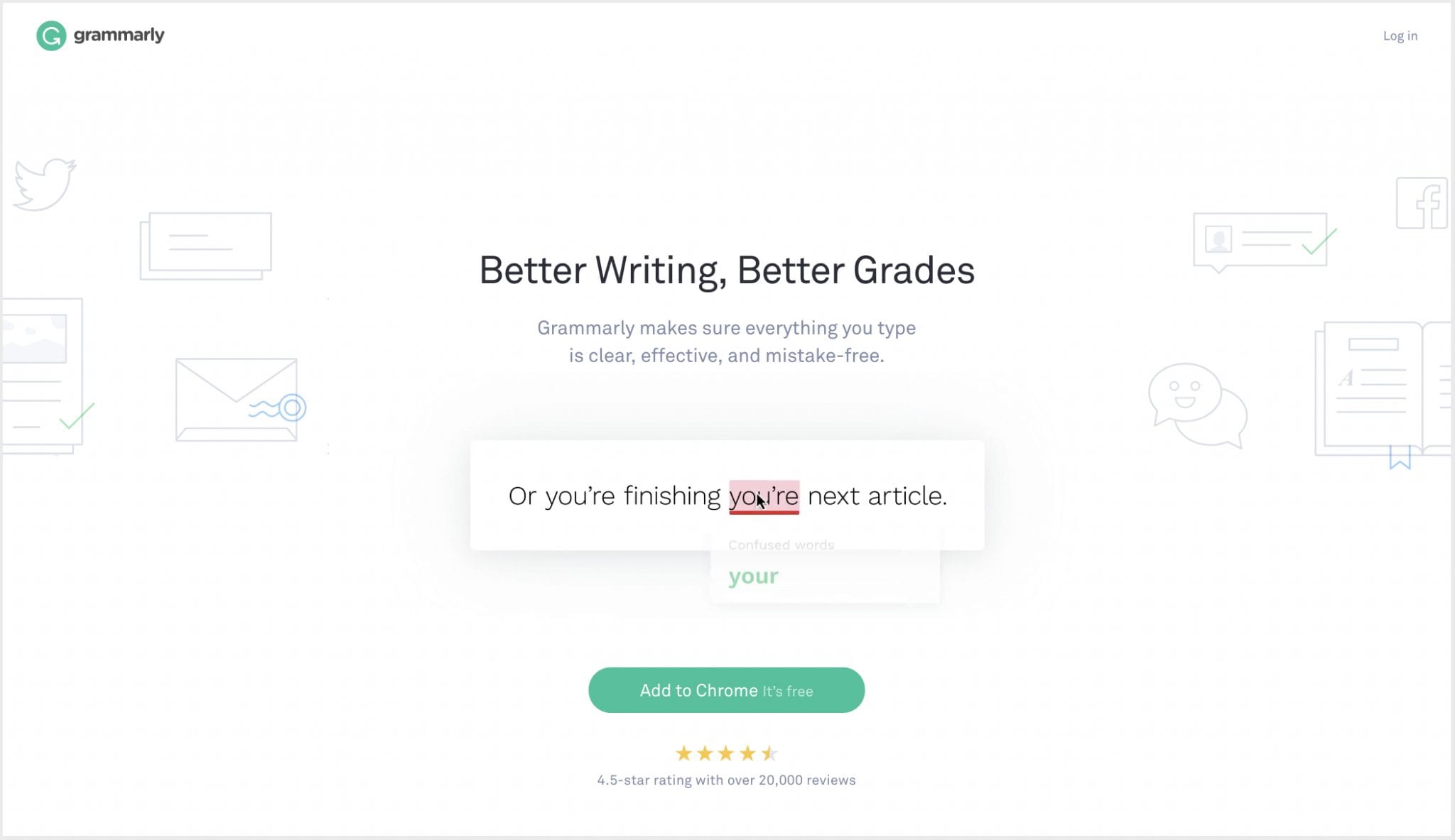
I clicked on a Taboola native ad by Grammarly leading to the landing page above, which is designed with elegant minimalism to draw attention to the headline, subheadline, an animated “mini-demo” and a CTA button. However…
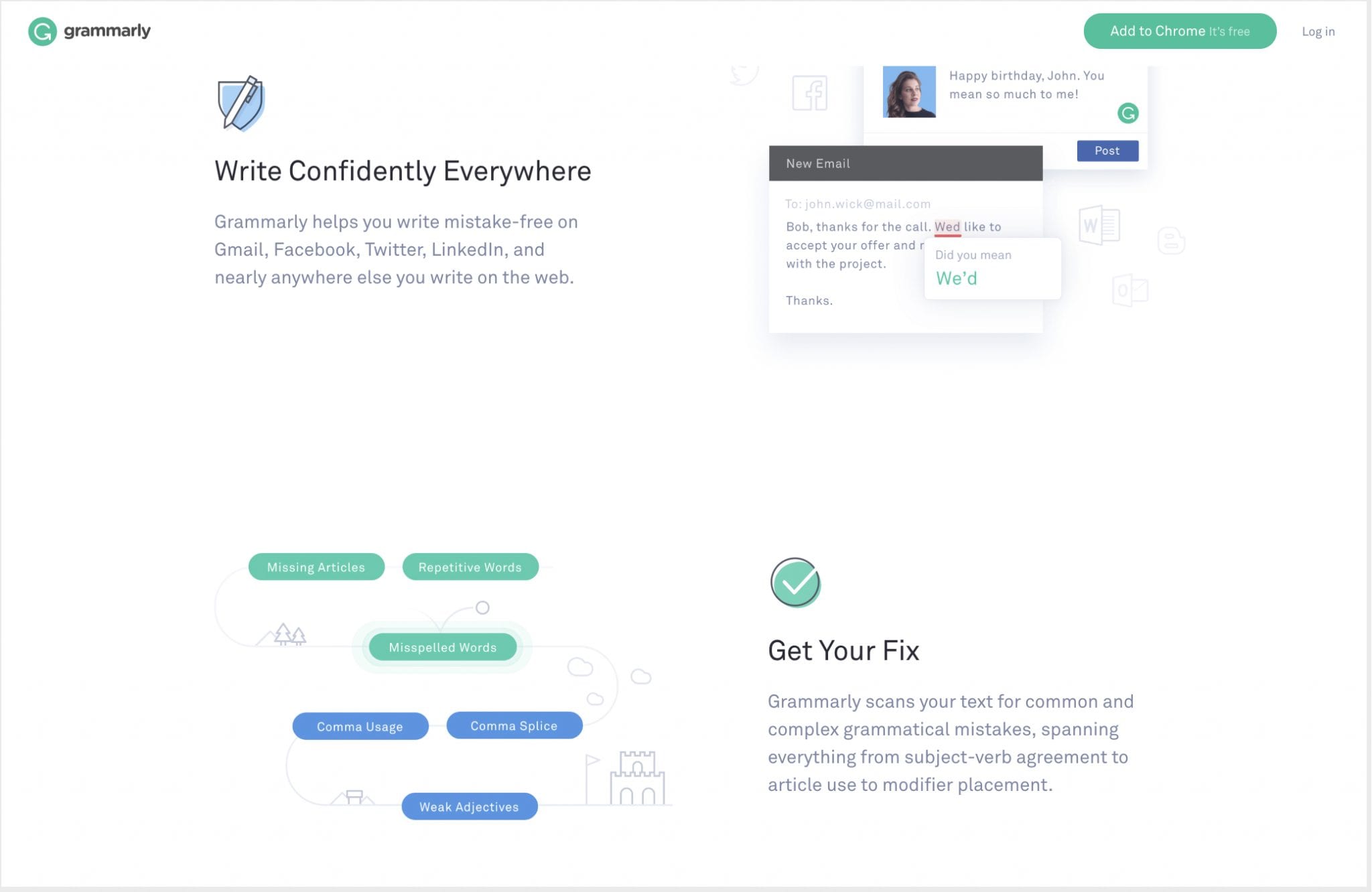
The page continues with multiple additional rows (only a few are shown here) that support the story nicely. Grammarly adds a smart touch by enabling the “Add to Chrome” button to remain on-screen persistently.
4. Design a compelling call to action
Look at the various landing pages examples in this post and it’s hard to miss the call to action button. For obvious reasons, you want your call to action buttons to stand out on your landing pages. Tactics you can use to direct the reader’s eyes to your button include:
- Use a contrasting color.
- Provide ample negative space around it.
- Repeat the button at multiple scroll depths.
- Create an eye path to the button with arrows or how it’s placed relative to the images used. For instance, photos often show people looking at or pointing to the call to action.
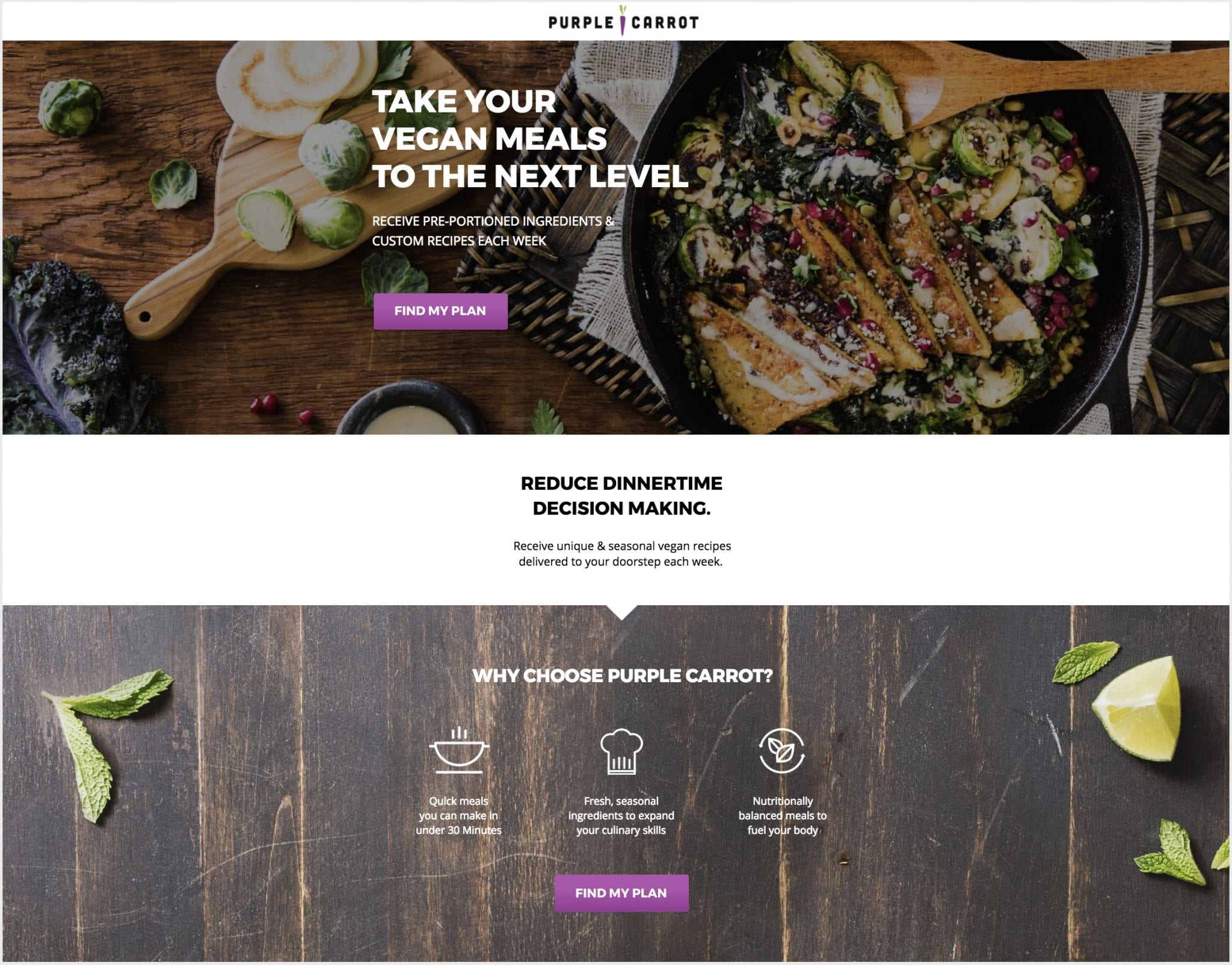
Purple Carrot’s landing page features attractive call to action buttons placed in multiple locations.
Here’s how to write a compelling call to action:
- Avoid generic language such as “submit.” Instead, write concise statements that reiterate the offer.
- Try first person pronouns such as “me” or “mine” and second person such as “you” and “your.” For example, “Find my plan” (shown above).
- Include action-oriented verbs (find, start, get, save, etc.).
- Place statements that might overcome objections near the button, such as “no credit card required” or “cancel anytime.”
Additional ideas and inspiration:
- Best practices for effective call to action buttons – from Feldman Creative
- 21 brilliant call-to-action examples to boost conversions — from Thrive Themes
5. Present a friendly, easy to complete form.
A common—and highly effective—tactic is to request the visitor’s email address and nothing more. Conversion increases vastly when the process is quick and easy.
Resist the temptation to be overly needy or greedy when requiring a form fill. Unless you have a legitimate reason to qualify the prospect, use the fewest number of fields you can.
Form length may depend on where your offer lies in your marketing funnel. As a rule, as you progress down the funnel, longer forms may be less of a deterrent.
Of course, your landing page lead capture form should be neatly arranged and feature easily discernible fields visitors will find easy to fill. Each field should be clearly labeled and not force the visitor to make decisions.
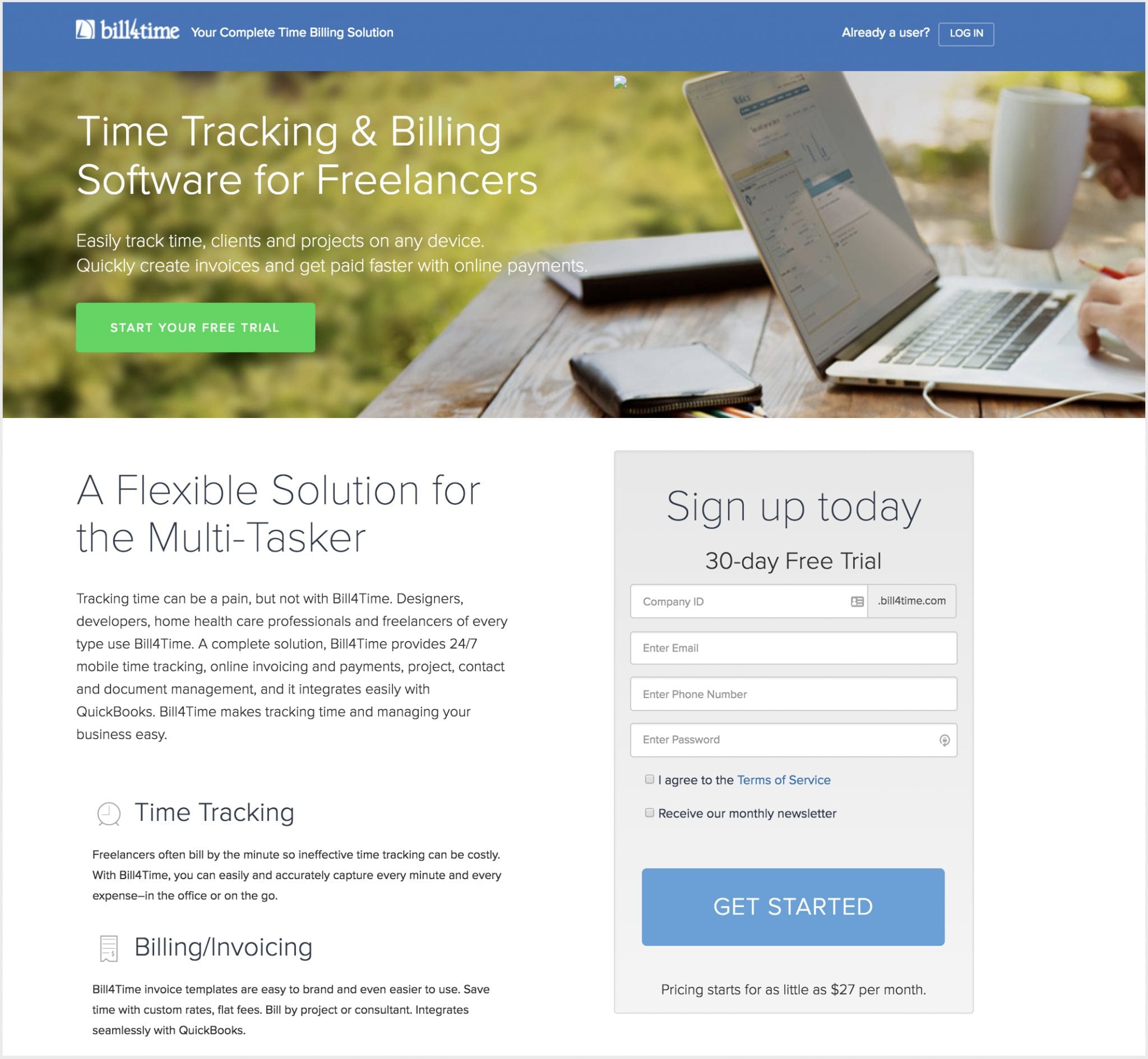
Atop the Bill4Time landing page is a “Company ID” field because the service requires the new user to create a URL. It also features a button enabling registrants to agree to receive a monthly newsletter, which I suspect will deliver helpful tips for using the service.
Additional ideas and inspiration: 15 Landing Page Form Best Practices & Examples — from VentureHarbour
6. Foster trust with social proof.
Use social proof to help those unfamiliar with your brand overcome their fears and proceed with greater confidence. Consider including the following elements on your landing pages to elevate the visitor trust:
- Customer testimonials
- Reviews
- Customer logos
- Trust seals (safe transactions, accreditations, etc.)
- Media features (“As seen on”)
- Social media posts created by fans and customers
- Privacy policy link
- Numbers (downloads, customer count, etc.)
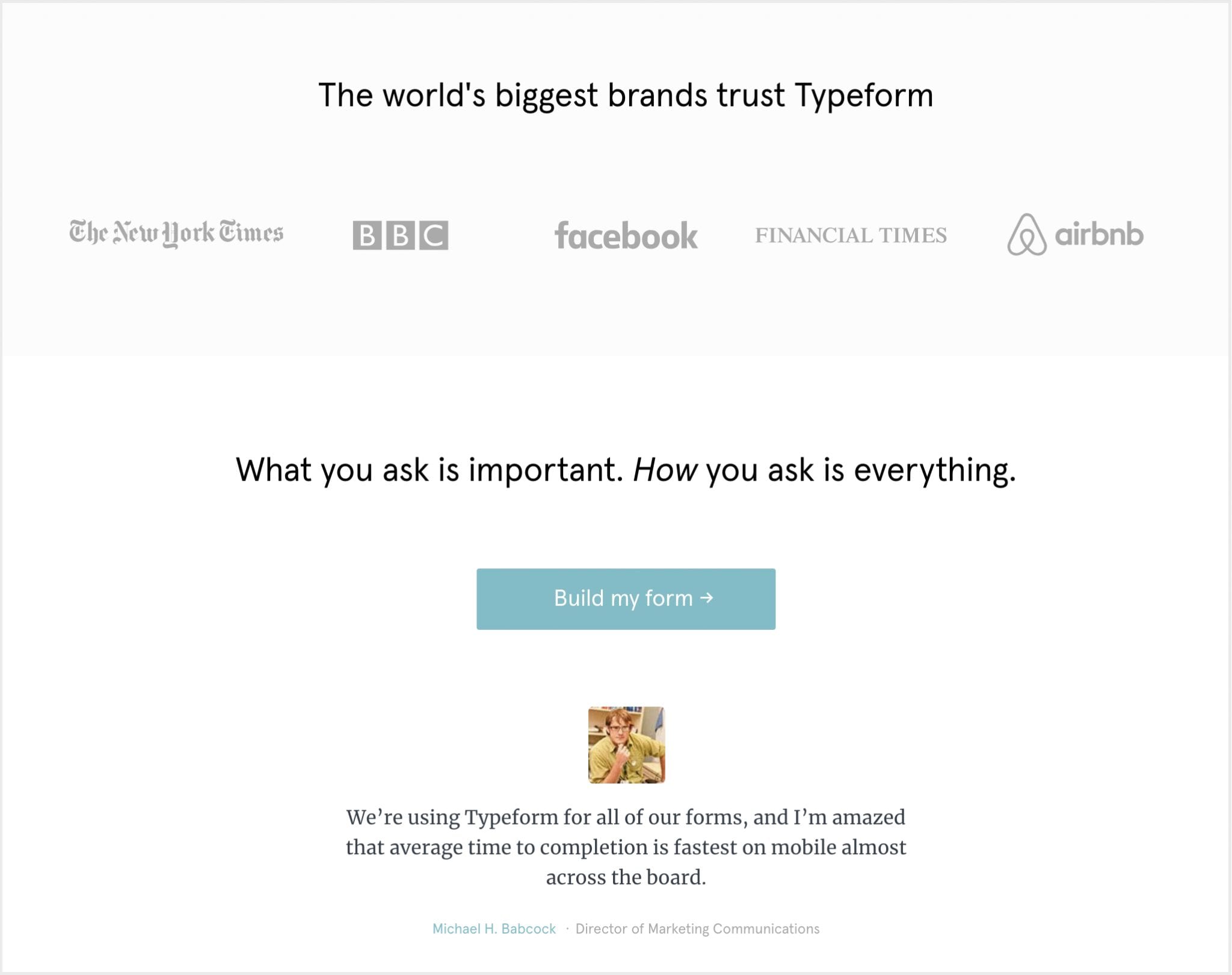
Consecutive sections on this Typeform landing page display customer logos and a testimonial.

This (mobile) landing page from Neat displays an impressive stack of numbers intended to assure newbies the service has served the needs of thousands of small business customers.
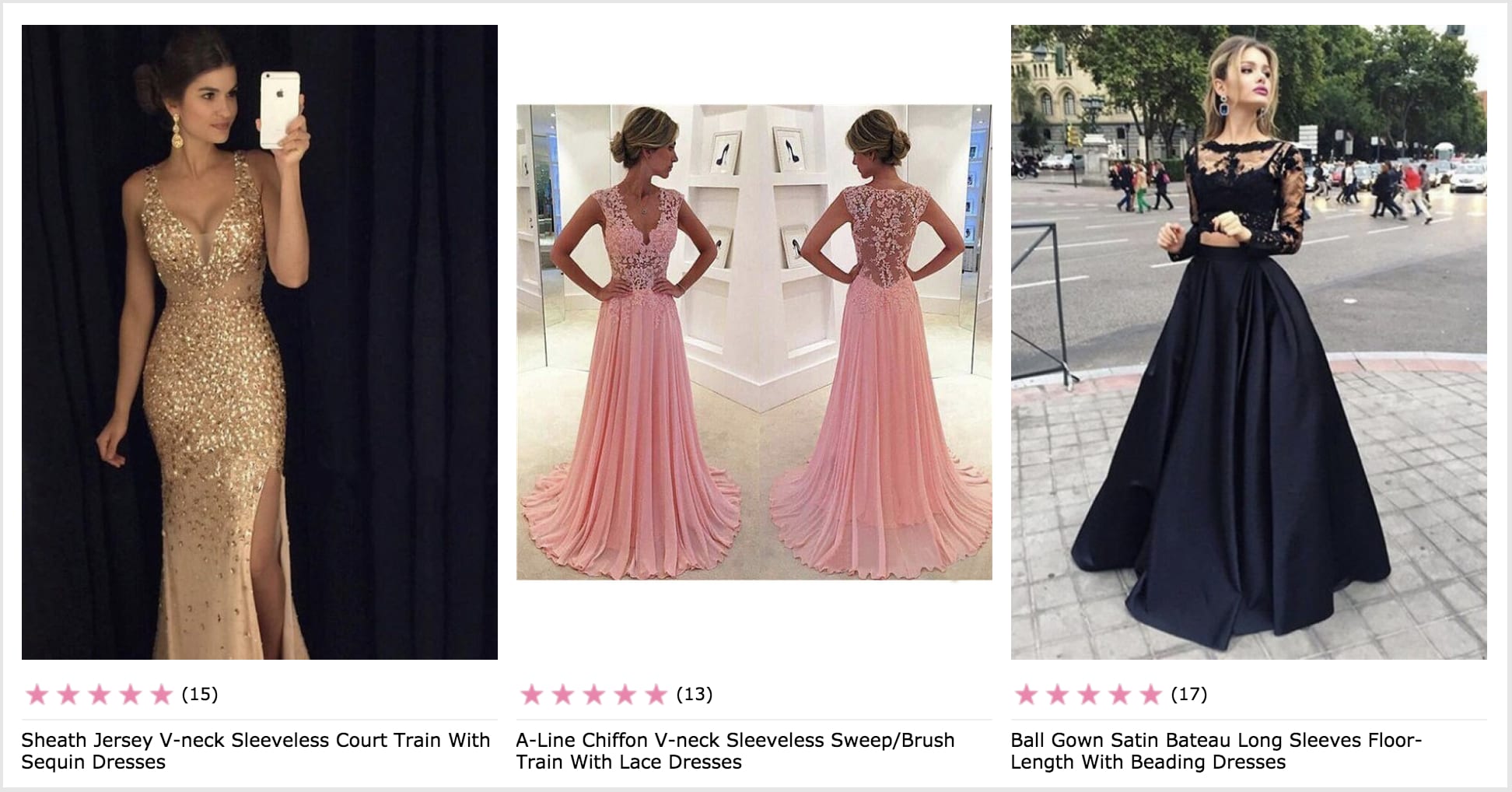
A common and effective tactic on ecommerce landing pages is to showcase user-generated content and review systems that produce star ratings.
7. Start with a landing page template that’s proven to be effective.
It’s easier than ever to create landing pages.
You’ll find landing page templates offered by email service providers (ESPs) and marketing automation platforms. Make sure to use a template that’s already proven to be effective.
Put effort into A/B testing your landing pages, it’s worth it. The more you learn about how your specific audience reacts to different landing page designs, the better.
To get you started, a number of companies provide an even greater selection of templates, plus simple solutions for customizing, re-using and testing them. Look at Unbounce, Instapage, and LeadPages, the leaders in the field, if you’re interested in creating effective landing page designs quickly.
And, of course, you’ll find oodles of helpful blog posts, ebooks, infographics and more content about landing page best practices at these websites.
Landing Pages Best Practices Infographic
Conclusion: Keep it Simple and a Landing Page Checklist
A high-converting landing page is the key to success for your native ad campaigns. Implement the lessons from this post to and convert visitors into leads.
Here’s your landing page checklist. Check back for an in-depth downloadable to help you build a highly converting landing page.
- Does your landing page focus on one deliverable?
- Will visitors immediately understand the offer?
- Does every element on the page direct the visitor to comply with the offer?
- Have you removed the navigation links used on your homepage and throughout your website?
- Does your headline closely match the content of the ad or asset that inspired the visit?
- Have you made your call to action button (or buttons) impossible to miss?
- Does your call to action reiterate the offer and imply action?
- Is your form fast and easy to complete?
- Have you included one or more forms of social proof on the page to build trust?
The Advertiser's Launch List for Landing Pages that Convert
Want more landing page inspiration?
Check out these impressive collections of landing pages:
- LandingFolio.com—This site offers a portfolio of excellent landing pages in 40-plus business categories.
- The 30 Best Landing Pages of 2018 for Design Inspiration—This is a “show and tell” style post featuring stellar landing pages from small businesses selling physical and digital products.
- The Ultimate Guide to Landing Pages—Leadpages delivers on its promise in this very thorough free ebook.
